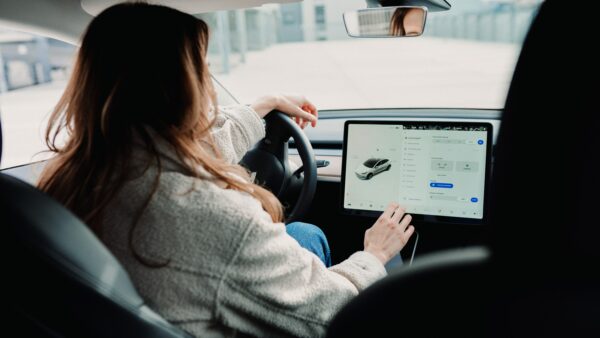
While practicing safe driving- staying alert and aware of other drivers and hazards on the road- is very helpful in preventing collisions, there are some hazards drivers will not be able to see coming in the milliseconds it can take to prevent a collision. Automated Emergency Braking (AEB) systems take accident prevention to the next level by helping to detect upcoming hazards and swiftly initiating the vehicle’s brakes.
Many cars come equipped with AEB features as part of their ADAS packages, but now the U.S. National Highway Traffic Safety Administration (NHTSA) wants every new passenger vehicle – luxury and entry-level alike – to have AEB technology by 2030, and it has to be capable of detecting pedestrians, too.
What is Automated Emergency Braking?
AEB systems emerged in cars beginning in the late 1990s and early 2000s. They typically feature some combination of cameras, radar or other sensors that work together to detect objects on a vehicle’s path and automatically activate the car’s braking mechanism in emergency situations.
Recent advancements in machine learning and artificial intelligence have significantly improved AEB systems. They can now better interpret data from sensors such as radar, LiDAR, and camera systems, enabling more accurate object recognition, better understanding of the environment, and improved detection of potential hazards.
Using data collected from AEB systems over the past 25+ years, carmakers are training algorithms to recognize objects better (especially in low light), predict their behavior, and improve responsiveness.
Automated Emergency Braking with Pedestrian Detection Will Make Roads Safer
AEB systems have improved in terms of sensitivity and adaptability. Modern systems can detect and respond to a wider range of objects, including pedestrians, cyclists, and animals. These systems can distinguish between harmless obstacles and potential collision risks, reducing false positive alerts and unnecessary braking.

Busy intersection (Photo by Jules PT on Unsplash)
As AEB systems get more imaginative, they have become increasingly capable of identifying complex situations, such as multi-lane traffic, intersections, and stop-and-go traffic, enabling them to intervene effectively and prevent collisions.
AEB Integration with Advanced Driver Assistance Systems (ADAS)
AEB systems have evolved from standalone features to integral parts of comprehensive ADAS suites. They now work in conjunction with other safety technologies, such as adaptive cruise control, lane-keeping assist, and blind-spot detection. These integrated systems can provide a holistic approach to collision avoidance, improving overall safety on the roads.
However, while many vehicles already come equipped with AEB systems, not all AEB systems are alike, and not all AEB systems can detect pedestrians.
Advancing AEB Systems with LiDAR Technology
Today, leading carmakers are looking at LiDAR, a cost-effective, all-in-one solution for everything related to vehicle automation, from AEB to SAE Level 5 full self-driving. LiDAR uses laser beams to create high-resolution 3D maps of the surrounding environment, allowing for accurate object detection, distance measurement, and speed estimation.
Not only can LiDAR better identify and track objects, pedestrians, and vehicles, but it can even do so in low lighting and challenging weather conditions.
AEB Progress in Safety with LiDAR Technology
NHTSA’s proposed rule for carmakers would require all newly built vehicles to be equipped with AEB systems by 2030.
Not only this – The rule would require that AEB systems be able to detect pedestrians at night, a capability only a few sensor technologies, such as LiDAR, can offer vehicle manufacturers. Seeing pedestrians at night for AEB could be done by thermal cameras or radar technology, but solely utilizing LiDAR for this need is a more holistic way to do it all, saving manufacturers and consumers money in the long run.
Innoviz Technologies and other LiDAR companies that make up the LiDAR Coalition, recently signed this letter, showing support for NHTSA’s game-changing proposal.
Leading the AEB Way with Innoviz
AEB systems have come a long way since their inception. With advancements in sensor technology, machine learning, and integration with other safety systems, AEB has become more precise, reliable, and effective at preventing accidents.
The commercialization of LiDAR can greatly enhance its capabilities, enabling vehicles to perceive their surroundings with greater accuracy and respond swiftly to potential dangers.

Be careful when driving (photo by Jenny Ueberberg on Unsplash)
Innoviz is a leading technology company in regards to advancing AEB and promoting road safety with exceptional LiDAR system integrations. Our team works tirelessly to improve the safety and performance of vehicles across a variety of industries, from construction to industrial drones to consumer vehicles with AEB systems.